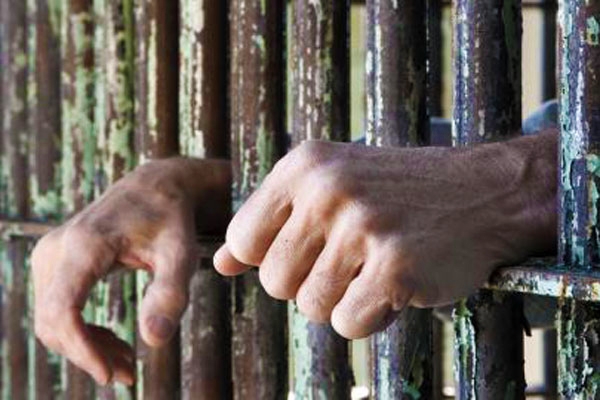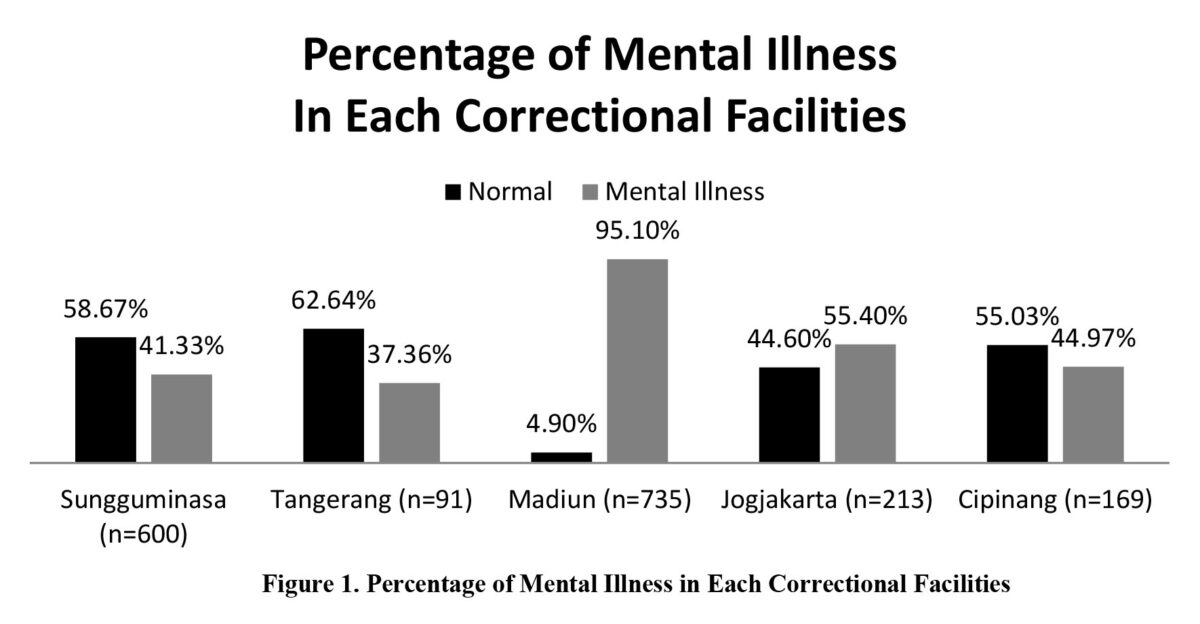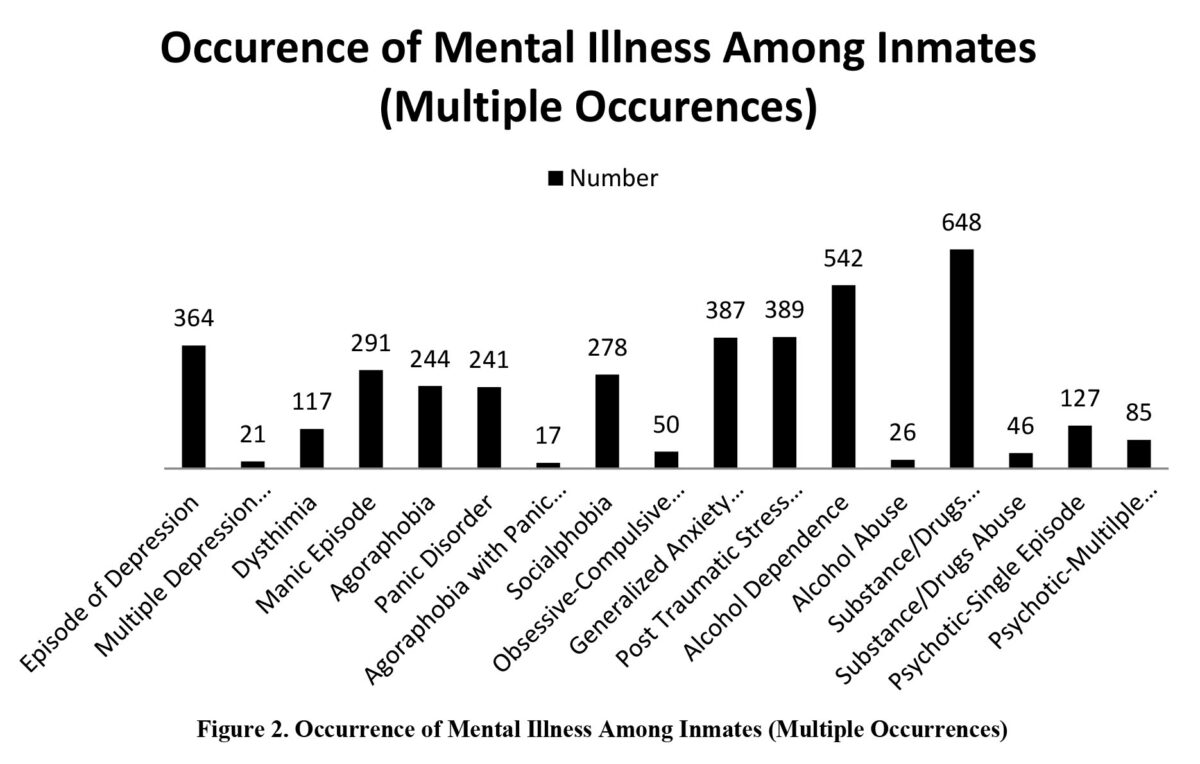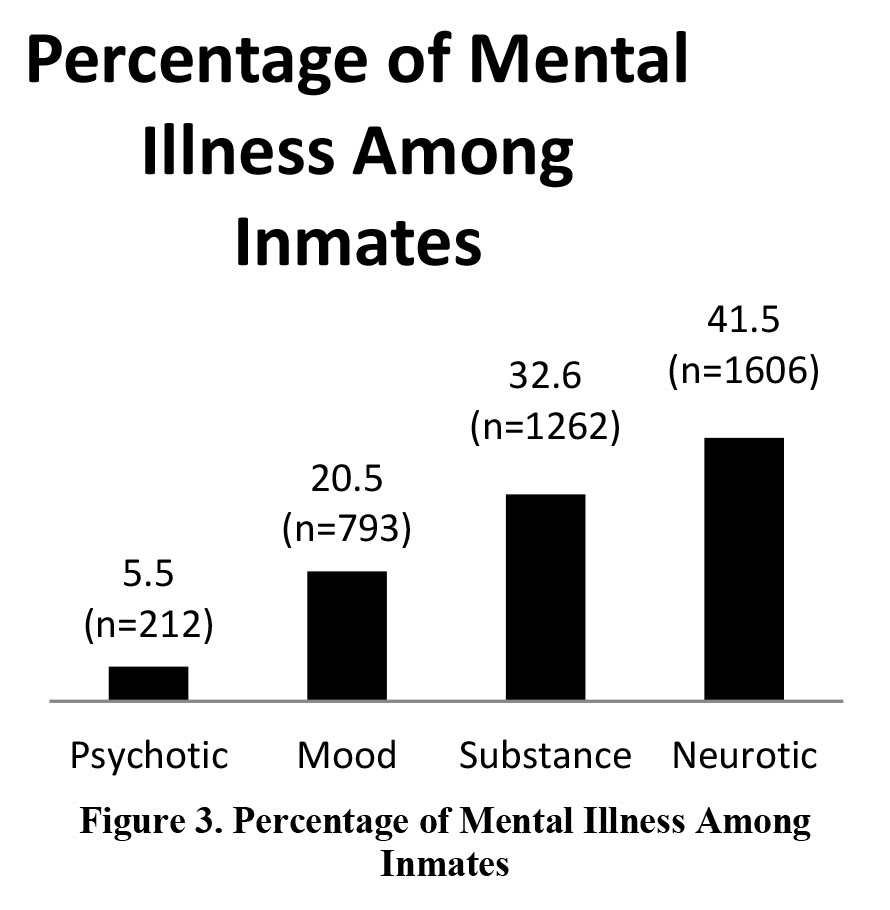A Case Study of 5 Correctional Facilities in Indonesia
Summary
There is a lack of reliable data about mental illness among people living in correctional facilities in Indonesia, thus this study provided basic data about the need of mental health service in correctional facilities. Mini International Neuropsychiatric Interview (MINI) was used to screen mental health problems. This assessment was conducted between December 2010 and November 2012, to 1808 inmates in 5 correctional facilities. Duration of interview is 20 minutes. There were 1175 inmates (64,99%) assessed with mental disorder. Subjects had a mean of 2 disorders. From all diagnoses, the highest occurrence found on substances/drugs dependence (648 cases), while the lowest occurrence found on agoraphobia with panic disorder (17 cases). From this finding, it is important for each facility to have mental health service.
Introduction
Population inside correctional facilities has close relationship with mental illness. 90% of inmates in United Kingdom are indicated having at least one mental health disorder1. In United States of America, more than half of all prison and jail inmates meet criteria for having mental health problems2,3. Recent studies shows the need of mental health services across the world, and it has been generally accepted that people in prison have the same right to health care as everyone else. Indonesia has no supporting data about mental illness in correctional facility. This study intend to provide number of mental illness among Indonesia 5 model correctional facilities and further used to determine the most suitable services.
Interviewers (prison’s medical personnel; general practitioner, dentist, psychologist, nurse and tamping) were trained to use MINI to assess mental illness in inmates. MINI screens all of major Axis 1 disorder, but authors decide to exclude eating disorder from data analysis. Authors weighed in prison it is unlikely to have eating disorder because in correctional facility setting, people need food as one way to survive. MINI was chosen for its availability in multiple language (including Indonesian) and short administration time (20 minutes). The questions are also comprehensive and each inmate could show more than one disorder.
This process was held from December 2010 until November 2012, to 1808 inmates in 5 correctional facilities. 1208 inmates were screened during reception at Tangerang, Madiun, Jogjakarta, and Cipinang correctional facilities. While in Sungguminasa correctional facility, there were 600 inmates being screened, both at their reception and sentenced period.
Findings
There are 1808 inmates from 5 correctional facilities whom being involved in this study. Among them, 65% had MINI disorder (1175 inmates) and 35% are normal (633 inmates). Madiun Correctional Facility contributes the largest number of inmates with 735 inmates to be screened. As seen on the graph below, around 95% of inmates in Madiun Correctional Facility had mental illnesses according to MINI. The lowest number of mental illnesses was found at Tangerang Correctional Facility with 38% in which there were only 91 inmates being screened. On average, more than half of inmates had a mental illness.
In Sungguminasa Correctional Facility, there were 600 inmates being screened. They were inmates on their sentenced period and newly recepted inmates, thus the prevalence of mental illness among inmates in Sungguminasa correctional facility is 0,413 (per 1000).
The majority of disorder is substance/drug dependence (n=648), and the least is agoraphobia with panic disorder (n=17). Each inmate had means of 2 MINI disorders. Similar to this finding, a report by the Department of Justice from the United States of America showed more than half of all inmates in America had a mental health problem. Slightly less than a quarter of all inmates were diagnosed with substance dependence or abuse only, but around a third of all inmates suffered from substance dependence or abuse altogether with mental health problems. These findings were based on criteria from Diagnostic and Statistical Manual of Mental Disorders, fourth edition (DSM-IV)2. The occurrence of mental illness among 5 correctional facilities in Indonesia is shown below:
After regrouping into 4 major disorders, most inmates had neurotic disorder with 1606 from 3873 reported cases. The lowest number of disorder is psychotic disorder with only 212 reported cases. WHO listed low mood or self-confidence (including self-esteem and dependence: drugs or alcohol) together with anxiety and depression among the most common mental problems found in prison primary health care practices4.
Nearly all from around 9 million people being held in prison experienced depressed mood or stress symptoms. High number of mental illnesses found inside the correctional facility may be caused by imported mental problems from outside world into the system4. This study found more than half inmates with MINI disorder during their reception, which could mean they already carry the problem before they do their sentenced period.
Other suggestion is that doing time inside correctional facility might deprived inmates’ liberty, thus causing mental problem. Furthermore, an overcrowded, unhygienic environment inside the correctional facility, aggression, lack of purposeful activity, availability of illicit drugs, and lack of privacy might be a trigger for mental illness to develop in inmates4.
Conclusions
Consistent with international findings, this study shows high number of mental illnesses inside the correctional facilities. As prisoners should receive the same level and quality of basic health services as in the community4, it is suggested that government of Indonesia provides mental health services through Ministry of Health and Ministry of Law and Human Rights at each facility. It is also vital to cooperate with community, as in Department of Psychiatry from each state university, to ensure the continuity of services.
Acknowledgments
This study was supported by colleagues in Madiun Correctional Facility (dr. Freddy Trimartanto – medical doctor, drg. Dian Retnaningrum – dentist, Yeni Rasdiana – psychologist). This poster presentation was brought by Reckitt Benckiser-Indonesia and Angsamerah Institution.
Download PDF
Angsamerah | Mental Illness Among Inmates in Correctional Facilities.pdf



